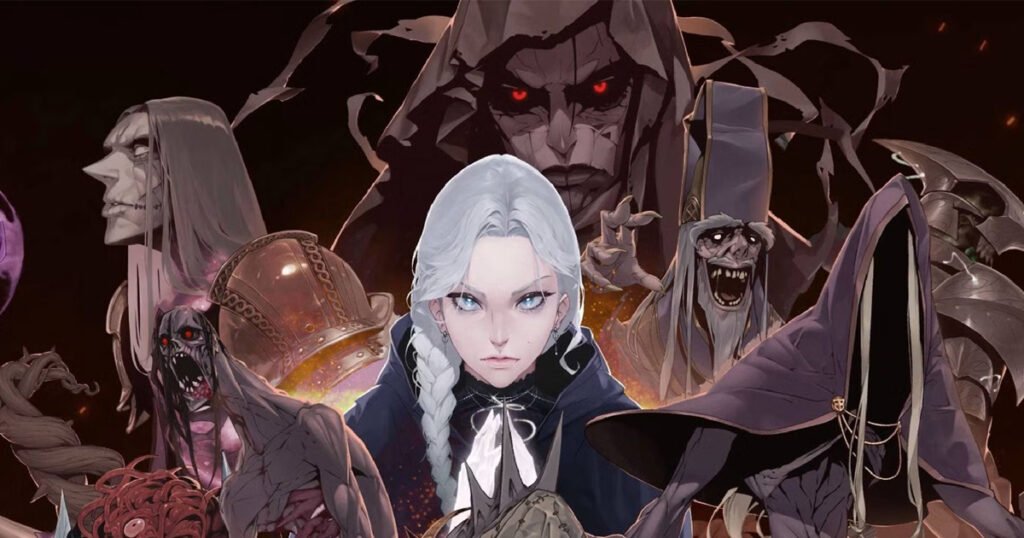Dragon is Dead on PC
Certain ingredients help to make a successful action roguelite: robust progression systems, excellent combat, challenging platforming, and a narrative that keeps you intrigued throughout. As the genre has evolved over the years, numerous titles have attempted to break through with mixed results. We can now add PM Studios and TeamSuneat‘s Dragon is Dead to the list.
The setup does hint at something quite fascinating. The black dragon known as Guernian is no more, but with its death following a struggle with the gods comes a wave of unholy energy that has spread across the world. This corruption has transformed life, creating a much more perilous world that players find themselves in.
Thankfully, you are an immortal warrior known as a Successor, capable of cheating death and returning to life stronger and more knowledgeable than before. Hence begins the rewarding cycle of life and death that marks a roguelite, starting with an attempt to stop the demons from manifesting near the town of Cliffshire.
Dragon is Dead Gameplay
If you have played any 2D action-platformer, then you pretty much know what to expect in Dragon is Dead. Each level is filled with formidable foes, precarious level design, and nooks and crannies that add verticality to the proceedings. All of these lead to a challenging boss fight that will put your skills to the test.
The amount of work required to learn the patterns of the enemies and the skill you have at timing your attacks is what makes this game an enjoyable grind. The combat isn’t easy, but as long as you pay attention and put in the work, the more it opens up in terms of possibilities and your chances of success. This gameplay loop is easily the best aspect of Dragon is Dead, a cycle that keeps you coming back for more, and defeating a boss truly feels like a significant feat.
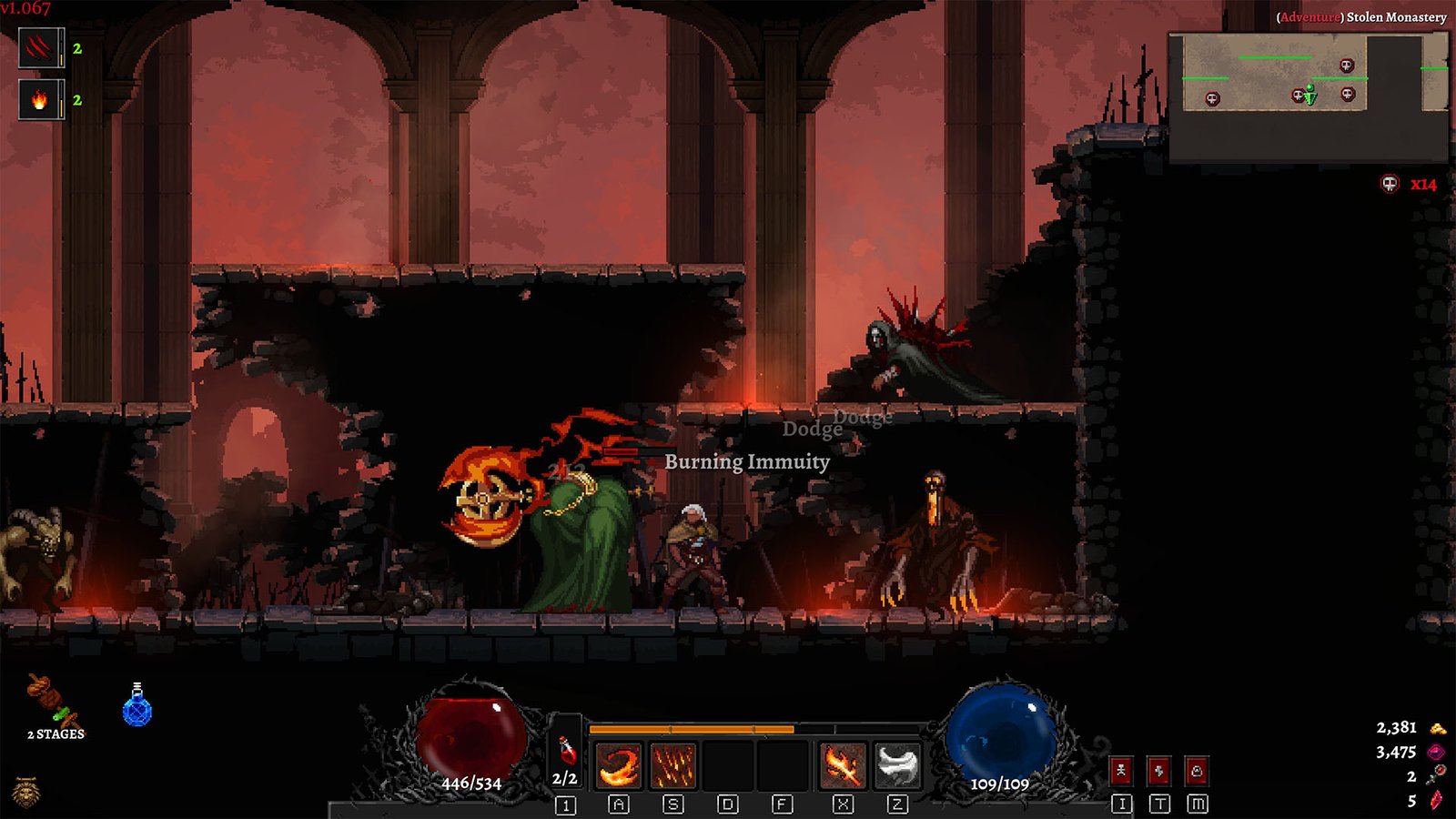
Death is inevitable, and when you eventually perish, it is a chance to take stock and prepare better for the next run. While the multiple layers that make up a level are regenerated, changing up the terrain, monsters, and even loot, you retain your equipment and, vitally, rune stones. These can then be used to craft more powerful gear, giving you an advantage even in death.
Complementary Elements
It also helps that many other elements play a critical role in strengthening players for the trials ahead. Equipment can bestow all types of buffs, together with the usual armour and damage-increasing stats, and this in turn works into how you build out your Successor, much like a pixelated Diablo. Perhaps you want to prioritise damage over everything else, or feel that your Intelligence, Dexterity, and other attributes should take precedence. Regardless of your approach, the game allows you to create builds that feel competent and still uniquely yours.
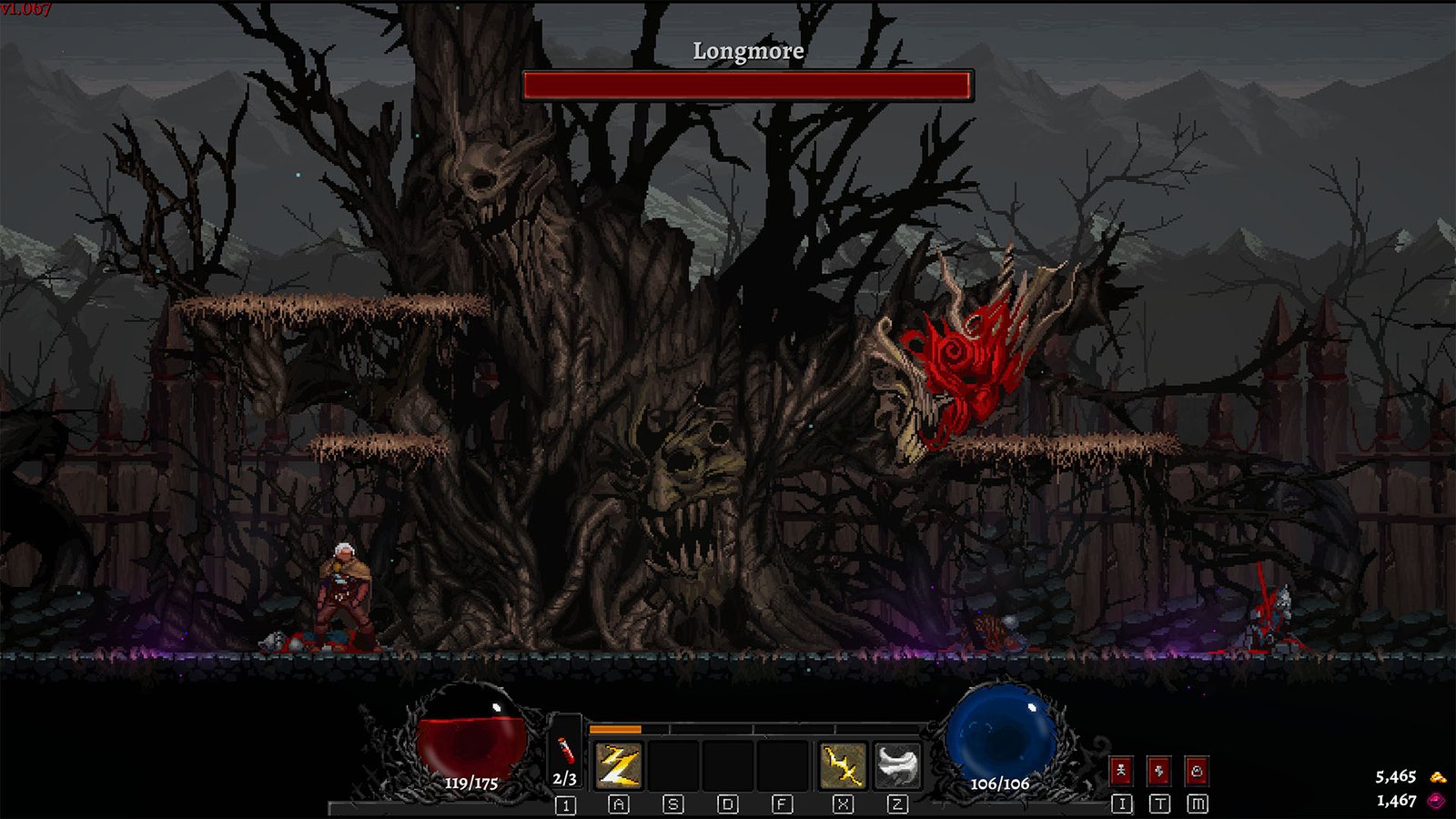
Combine all of that with the different skills and artifacts that you can pick up along the way, and you can already see the depth of the progression and the potential overlaps between the systems working to make you more of a killing machine. The elements of fire, ice, and lightning each have varied skills that affect enemies and the Successor in different ways, and you are free to specialise or diversify, all in the name of cleansing the corruption.
Similarly, each artifact can have different synergies, and the more you can build up a particular group with your equipment, the more upgrades and bonuses you can get. It is simply a thrill going from swinging a sword to literally raining down fireballs at your enemies, but the caveat is that you have to progress deep enough to benefit.
Power Overwhelming
While having that goal to aim for will drive most players, some will be overwhelmed. This is not helped by the fact that the nuances involved in its systems will require much more effort than usual to grasp and understand. How the stats actually work will take you some time to wrap your head around, so will the different layers of skills that seem to accompany every worthwhile artifact and the synergies that they bring.
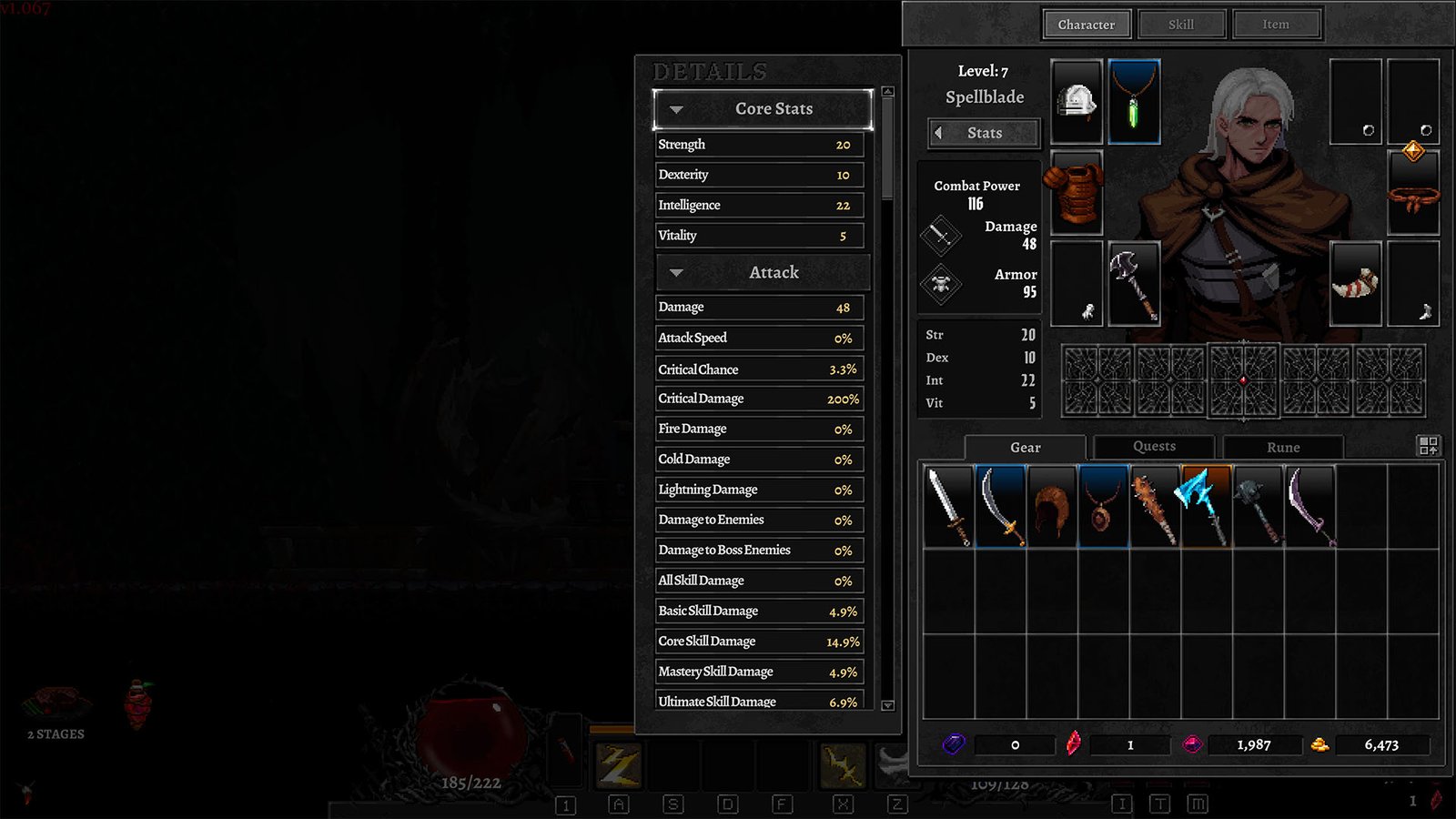
What could have been a wondrous journey of discovery, as one would expect from a game like Dragon is Dead, is curtailed by the way exposition is delivered. Interesting characters are not fleshed out properly, the world is not given more of a chance to shine, and it all diminishes the experience in impactful ways. There is potential there, but it’s not being brought out consistently.
That is certainly a pity, as this is a game that looks alluring visually. The art direction instantly provides that forboding feeling when you visit new areas, and the animations of both enemies and the Successor are a joy to behold. Of particular note are the introductions to the bosses, as they set the tone immediately and urge players to be on their toes if they hope to survive. The music, on the other hand, pales in comparison but still does the job of immersing you in the fight.
Not every roguelite can be like Hades and its sequel, but that doesn’t mean it has to be. While there are certain similarities between the leading games in the genre and Dragon is Dead, what Team SunEat has put together is still a worthwhile adventure that is just a little rough around the edges. For 12-16 hours or so, it will appeal to the player who is willing to enjoy the grind, and the result is an addictive time that looks great and plays well, just don’t look too keenly at the writing.
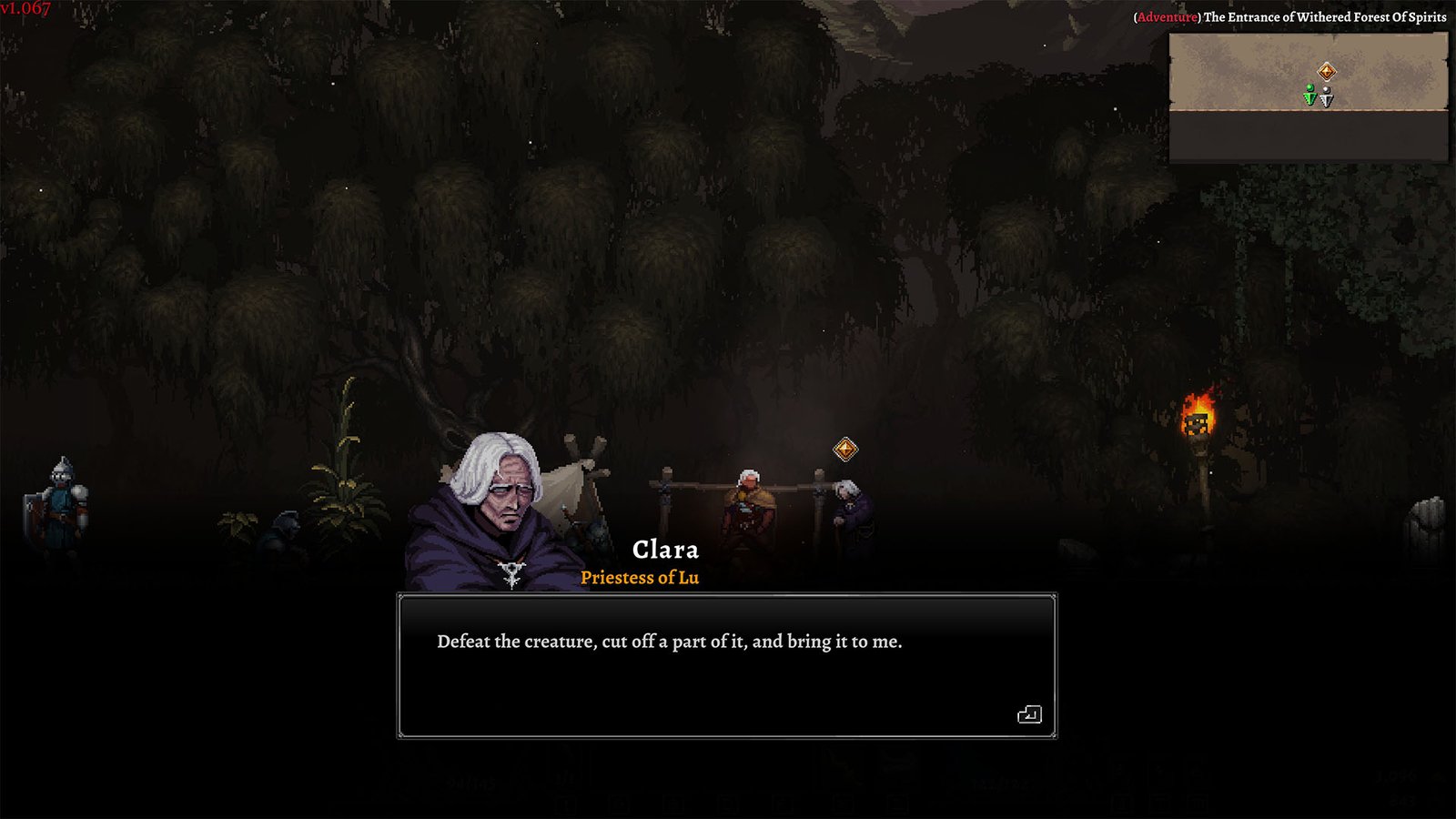
Dragon is Dead is now available on PC.
SavePoint Score
Summary
A roguelite hack-and-slash that comes close to greatness, Dragon is Dead just needs to tighten some things up to be considered one of the true greats in the genre.

